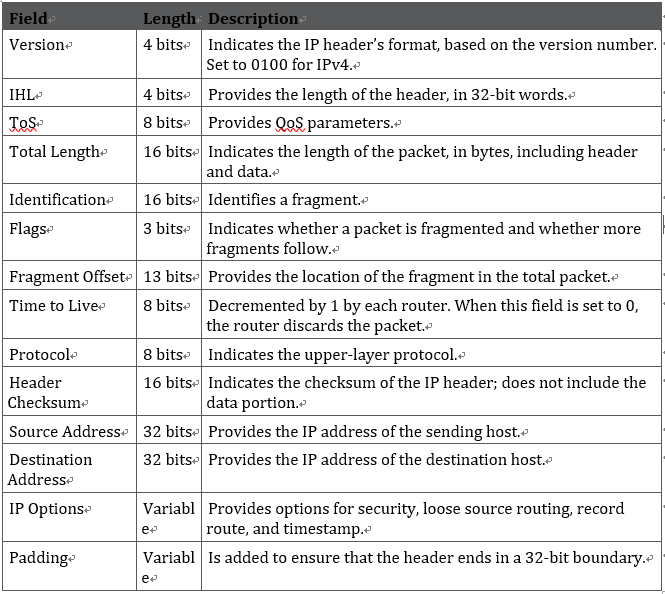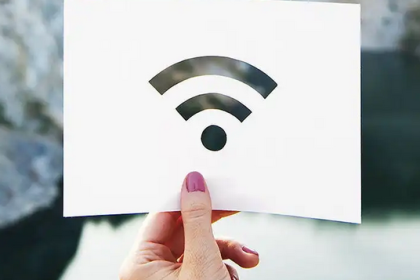- Header Checksum: This field is 16 bits in length. The checksum does not include the data portion of the packet in the calculation. The checksum is verified and recomputed at each point the IP header is processed.
- Source Address: This field is 32 bits in length. It is the sender’s IP address.
- Destination Address: This field is 32 bits in length. It is the receiver’s IP address.
- IP Options: This field is variable in length. The options provide for control functions that are useful in some situations but unnecessary for the most common communications. Specific options are security, loose source routing, strict source routing, record route, and timestamp.
- Padding: This field is variable in length. It ensures that the IP header ends on a 32-bit boundary.
Table 1-3 summarizes the fields of the IP header.
Table 1-3 IPv4 Header Fields

ToS
The Type of Service (ToS) field of the IP header is used to specify QoS parameters. Routers and Layer 3 switches look at the ToS field to apply policies, such as priority, to IP packets based on the markings. An example is a router prioritizing time-sensitive IP packets over regular data traffic such as web or email, which is not time sensitive.
The ToS field has undergone several definitions since RFC 791. Figure 1-2 shows the several formats of the ToS service field, based on the evolution of RFCs 791 (1981), 1349 (1992), 2474 (1998), and 3168 (2001). The following paragraphs describe this evolution.

Figure 1-2 Evolution of the IPv4 ToS Field
The first 3 (leftmost) bits are the IP precedence bits. These bits define values that are used by QoS methods. The precedence bits especially help in marking packets to give them differentiated treatment with different priorities. For example, Voice over IP (VoIP) packets can get preferential treatment over regular data packets. RFC 791 describes the precedence bits as shown in Table 1-4.
Table 1-4 IP Precedence Bit Values
| Decimal | Binary | IP Precedence Description |
| 0 | 000 | Routine |
| 1 | 001 | Priority |
| 2 | 010 | Immediate |
| 3 | 011 | Flash |
| 4 | 100 | Flash override |
| 5 | 101 | Critical |
| 6 | 110 | Internetwork control |
| 7 | 111 | Network control |
All default traffic is set with 000 in the precedence bits. Voice traffic is usually set to 101 (critical) to give it priority over normal traffic. An application such as FTP is assigned a normal priority because it tolerates network latency and packet loss. Packet retransmissions are typically acceptable for normal traffic.
Note
It is common to see voice traffic classified as IP precedence 5, video traffic classified as IP precedence 4, and voice and video signaling classified as IP precedence 3. Default traffic remains as IP precedence 0.




